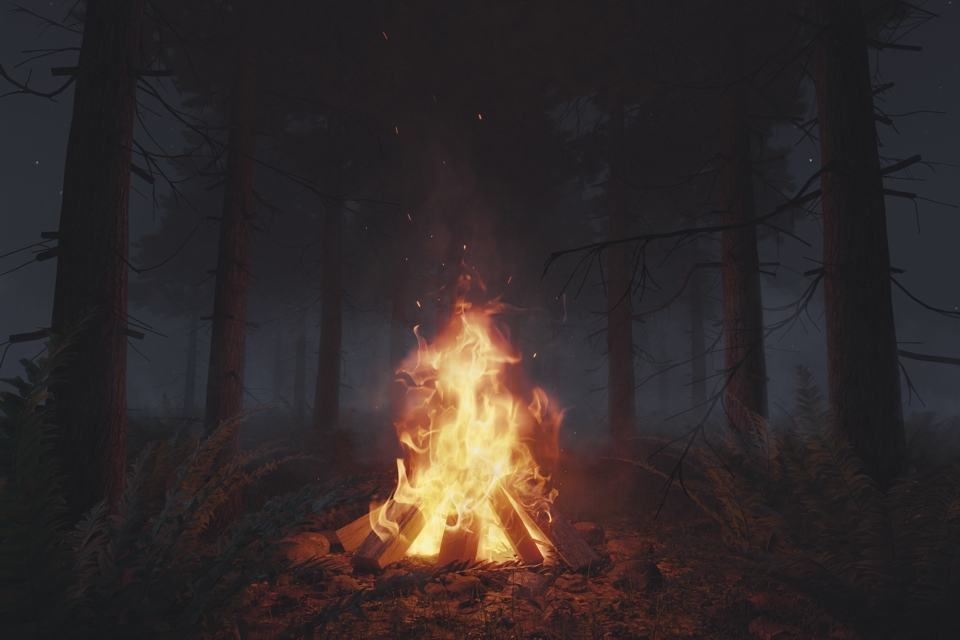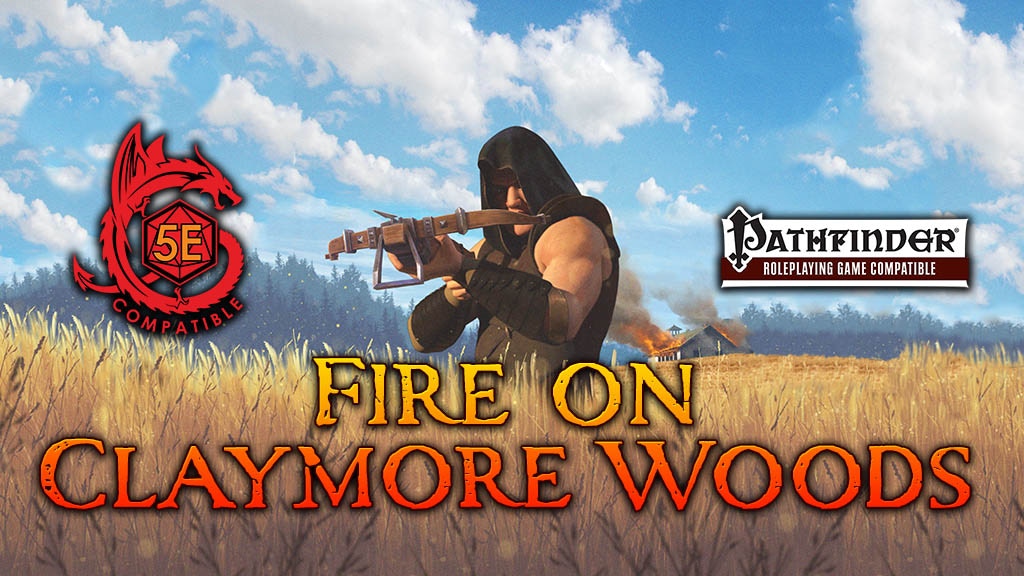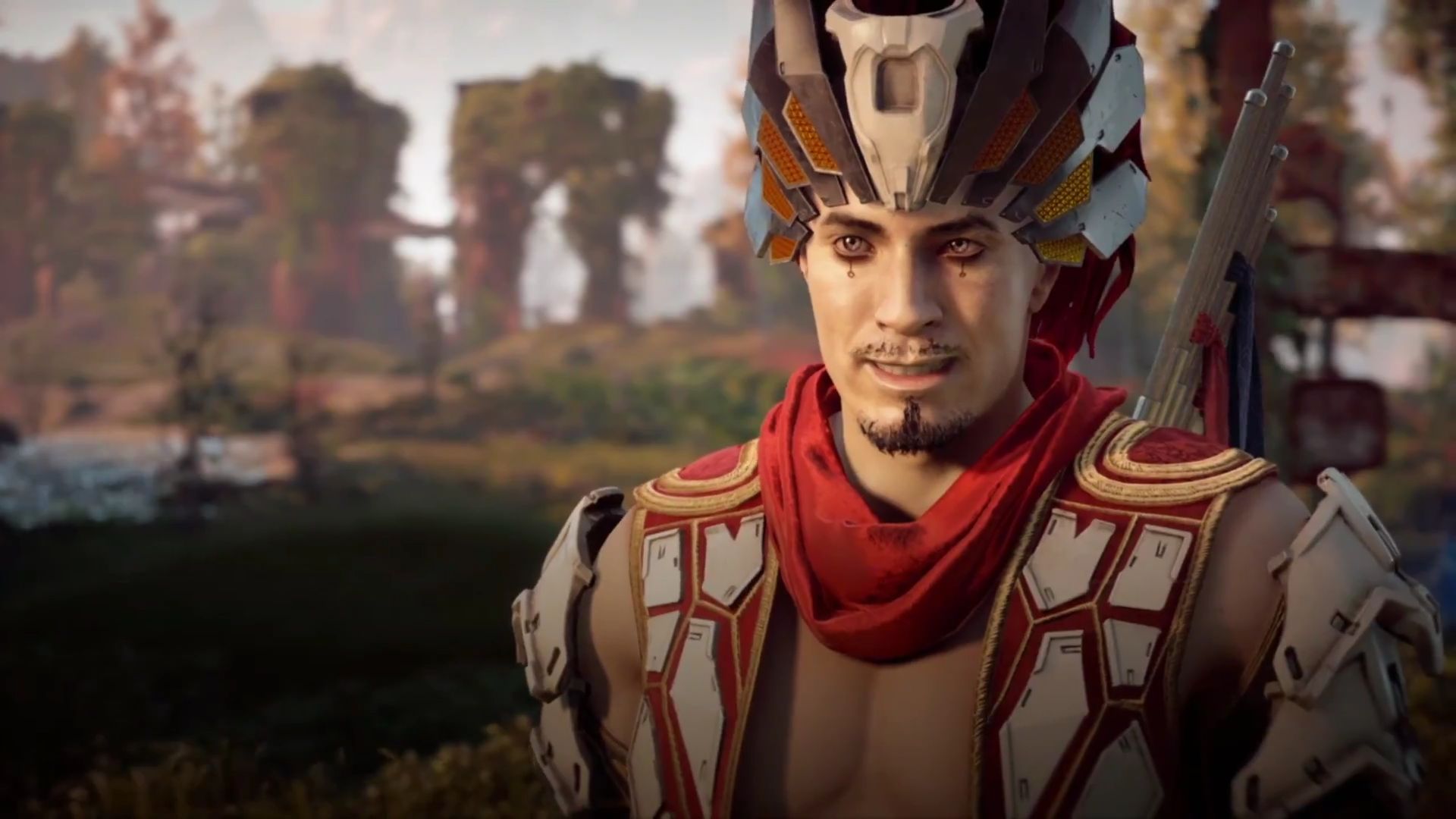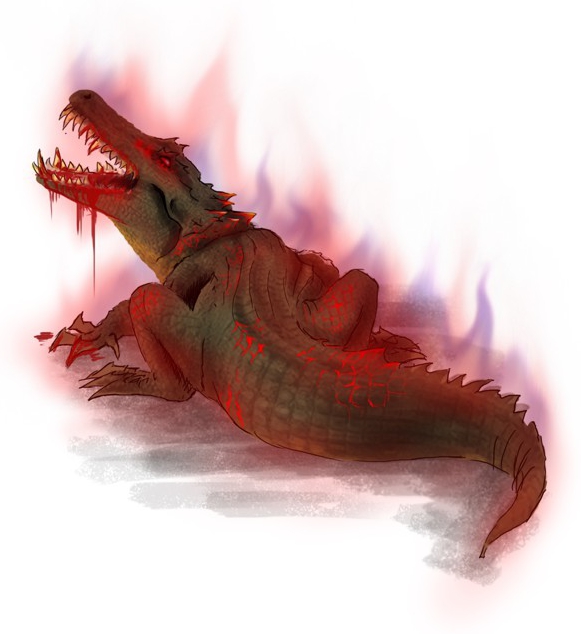A Beacon of Warmth and Danger (dun, dun, dun, dun!)
Ah, the campfire, in modern times, it is a beacon of light for warmth or merriment in the dark, the promise of wholesome food, and the world’s original gathering place for conversation.
In D&D, a campfire is usually a giant “here’s a big snack!” for monsters or “come kill me or take my stuff ” for brigands.
In a role-playing fantasy game, the titular campfire is an Encounter, especially if the PCs did not make it.
Here are three campfire-encounters, heavy on the role-play, for a DM to use. These encounters are not skill challenges. The PCs are traveling from Point A to Point B on a trail less traveled. In the dark, they spot the flickering light of a campfire.
Campfire 1: Beware the Old Man in a Profession Where Many Die Young
Javier Lance is eighty-years-old, wrinkled, and still muscular. A survivor of many skirmishes and a few battles, Javier is a tired man. His joints hurt in the cold more than usual, he’s slowed down considerably, and worse, to him, he’s beginning to forget things.
Thus, even living with his extended family (having buried his wife several years ago), Javier kissed everyone goodbye and left for “an extended hunting trip.” Javier is not a man to die in his sleep happy. His goal is to part the mortal realm with a blade in his hand in a final kill-or-be-killed fight. Everyone knows why he left.
Campfire Description
At the campfire is a man, turning a spit with a fat, skinned rabbit roasting over the coals. He’s tall, athletically built, and old. A well-used heavy crossbow sits against a tree along with a boar spear.
The man is armed to the teeth with a sword, warhammer, and numerous dagger sheaves on his dull-silver split armor under camouflage cloth. A battered shield with the King’s livery sits on a stump.
Javier’s Motivation
Javier came to the woods to die, knowing there are several Dire Cave Bears and Dire Boars about the woods. If approached, he will gladly share his campfire, the rabbit, and swigs of whisky from his flask.
Javier didn’t spend decades as a decorated soldier without learning a thing or two about people. He has a keen insight about people, and if he thinks the PCs are evil or wish him ill, he’ll smile at being favored by the gods in his old age and attack.
Disposition
Friendly
Javier, if treated with kindness and respect, offers to trade the PCs, either his crossbow, shield, sword, or warhammer, for one like item. Whatever the PCs have, Javier’s will be better. For example, if the cleric has a +1 shield, Javier’s will be +2.
The exchange is only for one item. If any (or all) PCs have a heroic reputation, he will ask them if they can meet him back at the camp location in three days.
If the PCs do so, they will find him dead of multiple wounds from some beast, with a smile on his face.
The PCs should bury him with his weapons or burn his body on a pyre with same. If they take his stuff, the local deity of war curses the PCs en masse, and the PCs will always fight under the curse spell’s adverse effects until they atone.
Does Javier Lance tell the PCs why he is here? Only if he senses that they would respect his choice.
Neutral
Javier tries to make friendly conversation, but if the PCs are not pleasant or say the wrong thing, it doesn’t bother him. He’s mostly immune to people’s bad manners.
Javier will offer to share a meal, and then he desires time to be alone with his thoughts and prepare his communion with the gods of the land.
If the PCs refuse his request, his disposition changes to Hostile.
Hostile
If the PCs are evil or turn hostile, Javier will matter-of-factly don his shield, grab his crossbow, and attack the weakest PC in terms of melee ability.
No need to roll up stats of Javier: take the best melee PC’s character sheet and clone it. Javier fights with a shield, longsword, and warhammer, switching weapons when appropriate. However, the gods have blessed this old man to have a glorious battle to the end. They give him:
- The ability to strike as many times as there are PCs
- All his hits do maximum damage
- He always makes a saving throw or ability check
- He can move about the battlefield without provoking opportunity attacks
- He will fight until he is at -10 hit points, or until only the melee PC is the last one standing, in which he will die when the melee PC lands a good blow
He uses these tactics:
- Javier will always deliver a death-blow. He is fully aware that healers can heal fallen people with magic. He will always strike at a fallen PC until assured that the PC is dead
- He attacks in order from the lowest hitpoint PC, controllers, healers, damage dealers, and finally knights or heavily armored fighters
- Javier is smart enough to put himself between a tree and a ranged weapon
- At this point, any pain Javier feels is transitory. He smiles through the entire experience, thoroughly enjoying himself
This fight is not fair, but the PCs should be wary of Old Men in a profession where men die young, especially if they are communing with the gods before a battle.
Campfire 2: The Folly of Youth
Before a nice tent, this campfire has a young, heavily armored knight staring at the flames of the campfire. He wears a holy symbol and religious livery. He has pale skin but a stern demeanor.
The knight is Sir Davian Kadlem, a young but proficient cavalier and paladin. He’s here on monkey business, here to meet a lover. Tragically, his lover is a vampire. She already bit him twice.
Despite his stern demeanor, Sir Kadlem will easily converse with PCs and eventually cut off any conversation by saying he is here to meet a person privately and needs the PCs to be on their way.
Sir Kadlem will lie through his teeth about his shame, but it’s all lies by omission. If pressed, he tells the PCs his meeting is of intense personal nature and not for public consumption but a family matter–all true.
Kendra the Vampire
Thoroughly evil and entirely malignant, Kendra is a user and abuser. She uses handsome young men, feeds off their essence, and kills them before moving on to a new lover.
Somewhere in her dark heart, she grew fond of Sir Kadlem, and she perversely takes pleasure in the thought of bringing a paladin to wicked ends and becoming her companion and servitor for all eternity.
If the PCs confront Kendra at any time, she turns into a bat and flies away, or, if in dire straits, her misty form.
Possible Outcomes
This campfire is not a skill encounter where the PCs roll a dice, and the DM says this, that, and the other thing. Let the players organically come to their conclusions.
The level of the vampire and Sir Kadlem is variable, as a rule of thumb, an Average Party Level +4 encounter.
Liaison Observation
If the PCs are busybodies, leave, and spy on the paladin, a woman rides up to the campfire on a horse, jumps into his arms, and the two disappear into his tent.
Somewhere in the darkest hour, she bites him, but it’s doubtful the PCs will observe that. At dawn, she will ride away, leaving behind Sir Kadlem’s corpse to rise as a vampire fledgling at night. If the PCs go into the tent, they can tell something terrible happened, and even an examination by a non-healer will find the bite marks–this time on his neck.
The Pale Man
What do people look like after a vampire feeds off them two nights in a row?
Answer: Not healthy.
Sir Kadlem hides his malaise well, being so athletic. However, the most telling way he hides his condition is that he doesn’t know Kendra is a vampire. He thinks incorrectly, but honestly, he has a bout of food poisoning. He’ll even ask a PC if they look like an herbalist if they have some herbs to settle his stomach.
Davian’s neck is free of bite marks. They are in other places on his body, only found on a physical examination without his clothes. If a medically-inclined PC gets him out of his clothes and shows him the bite marks with a mirror, he’ll break his charm and ask the PCs for help.
Kendra won’t give up. She’ll fight the PCs for Davian but flee if the PCs do severe damage. Unless the PCs break his charm, Davian will fight for Kendra. She’ll think it’s hilarious if he falls, especially if the PCs are good.
I Read Your Thoughts
If a PC has a way to read memories and does so, those memories are disturbing. The knight has a paramour, but his memories never reveal her image. It is as if he is talking and having a liaison with an imaginary person.
Such is the power of a vampire that her image, even in memories, is not visible. If someone wants to gaze upon this vampire, they need to do it in person.
Where Is Your Horse?
Sir Kadlem came here on a horse, but his horse is not here, nor can he summon it magically. If the PCs ask about his camp contents, besides the tent is a lance and a horseman’s mace.
An inquiry about his horse is one of the few ways PCs can tell something is amiss–his horse ran off in disgust, and Sir Kadlem isn’t particularly worried about it. He’ll claim his horse was “moody” today, and before he could take off the saddle, he galloped off. “He’ll be back,” he says.
Sir Kadlem is not just a paladin; he’s a cavalier. His horse is the way he engages in battle and his honor. PCs can press him, and if they take a logical, systematic approach to their questioning, it becomes apparent that someone has muddled Davian’s thoughts. He alternates in bragging about his horse and his cavalier skills to an indifferent attitude on his horse’s fate.
It is now up to the PCs to figure out what comes next. In any event, the only way the paladin’s horse comes back is if he atones for his weakness. Once he has done so, his god sends him back his mighty paladin steed.
Victory (?) Conditions
The only way for the PCs to achieve some measure of victory is to get Sir Kadlem to his temple. Unless they break his charm (by dispelling it or by a protection from evil spell), he will fight them all the way. Regardless, sometime during the night, Kendra will attack the PCs on the way to the temple.
Once at his temple, the priests break his charm and heal him. However, Sir Kadlem will have to atone for his weakness–he will have to confront his nemesis and former lover and drive a stake through her evil heart. No small task, as he will not have access to any of his paladin powers until he has completed it.
He’ll need help in this quest. He won’t be able to complete it on his own.
Campfire 3: Death Head Ranger
Just what kind of people are the PCs? This encounter can put them to the test if they think they are all that and a bag of chips. This location should be at the edge of a remote, primal forest, far from civilization. The PCs may or may not be heading to a destination in the woods.
This campfire is at a permanent campsite. The fire has a windbreak that pushes heat back to a well-built lean-to. Well-placed rocks ring the flames, and a metal stewpot hanging on a metal tripod fills the campsite with the smell of savory stew.
At the camp is a middle-aged man in leather armor, a uniform of some sort–on his shoulder is a death head patch. This man is the Ranger Tamshire Roe, and he is a demi-god of sorts.
Tamshire Roe’s Motivation
The ranger forms a symbiotic relationship with an ancient green dragon, Sirlaenth, that lies deep in the forest’s center. At one time, the dragon tried to charm him, but Roe, a master ranger retiring from a harsh life of adventuring, pretended to be charmed. There was something odd about this gargantuan dragon, and Roe decided to get to the bottom of it.
Through observation and many conversations, Roe learned this particular dragon was immortal, as she set up her lair in a forest that, for reasons unknown, kept her from eventually dying of old age. Over the centuries and still thoroughly wicked, she has grown contemplative and stoic.
When Roe revealed he wasn’t charmed, the dragon laughed, thinking that was amusing and stupid on his part. Still, they quickly formed a relationship–the ranger would protect her forest from intrusion during retirement and ask nothing in return. He would even give her the considerable treasure he amassed over the years. As a ranger, he does not need material wealth.
In return, the dragon promised to “not fly off and do stupid shit to attract dragonslayers.”
Roe’s motivation is simple:
- Protect the forest’s inner core from intrusion
- Hold conversations with travelers to learn about the world-at-large
- Deliver any treasure and information accumulated to Sirlaenth
What did Roe receive in return? He received peace and quiet with the occasional “turn back now there be monsters” speech. But now, he too is immortal. The same mystical properties that keep the dragon alive are keeping him from aging, also. Roe is over five-hundred-years-old.
Tamshire Roe’s Past
Before he embarked on a life of adventure, Roe was a feared hunter of men and elven criminals for a kingdom now long defunct. Lore or history savvy PCs will recognize the death head’s patch from an infamous group “widely known for tracking down men and elves for a tyrannical king,” although the real history is less dramatic. Criminals and enemies of the state would flee into the primal forest on the Kingdom’s border. Roe was a member of a company that would track them down.
If confronted about this past, Tamshire Roe will shrug his shoulders and proclaim, “I ain’t like that no more.”
Using Roe
Roe is a way for the DM to insert esoteric lore and odd help from strange places. Roe intentionally lights a campfire (see below) where the PCs can see it at night. The moment the PCs approach the fire, the ranger started judging their worth.
Low-Level PCs
Roe will heal any wounded Low-level PCs, ask for gossip, and, if prompted, he is a vast treasure trove of lore around nature and history. If asked about his patch, he will state it is a warning to the forest’s enemies that only death awaits them for defiling it.
If the PCs need to get somewhere in the forest, Roe will happily guide them and protect them from harm as long as their destination is not its core.
Mid-Level PCs
As with low-level PCs, Roe is helpful, if a bit odd, extending the PCs the same courtesies as if they were low-level. However, he will ask the PCs for a boon in return–if he helps them, the ranger would like the PCs to obtain supplies for him: Roe has a fondness for booze, wine, cheeses, and anything else he can’t make in the forest during his perpetual campout. He can pay twice the going rate for such items.
He pays in coin, usually taken from people that try to penetrate the forest interior.
High-Level PCs
Tamshire Roe is highly wary of high-level adventuring heroes, viewing them as arrogant and dangerous. However, he always judges people based on their actions, so it’s not so much what the PCs say than what they do.
Powerful PCs could know that the forest center contains an epic dragon. Roe will admit as much but warns the PCs that what they are talking about is not a dragon but a “primal force of distilled nature.”
A high-level party could be after esoteric lore or an item. Roe will exchange items for like items and folklore for a minor magical item or gems and coins but warns the PCs that it will take several days for him to fetch what they need.
Under no circumstances will Roe lead the PCs to the dragon, but the dragon, in human form, could decide to meet the PCs at the edge of the forest.
Getting Frosty
Attacking Tamshire Roe has severe consequences. Not only is he capable of running a hit-and-run battle through the forest, but also tracking PCs who manage to escape his wrath. If the PCs decide to get it on, conclude the session (letting the players think about their folly for a bit), and pick back up with a max-level ranger with the following properties:
- Tamshire Roe is a 20th level ranger with appropriate magical items.
- Roe can teleport at will to any of his campfire sites in the forest. There are twelve of them that dot the edges. He can do this as a reaction to being hit, stunned, grappled, or incapacitated
- However, in the woods, PCs are unable to teleport or plane shift or go ethereal. This restriction also includes low-level spells such as misty step
- PCs cannot scry him, and divination reveals he is “a forest creature of death” and nothing more
- The ranger cannot have his thoughts read and is immune to psychic damage of any sort
- He has all the powers, immunities, and resistances of a legendary ancient green dragon, including the breath weapon
- Finally, if killed, Roe and his gear disappear for 1d4 days and reform at one of his 12 campfires. The only way to permanently kill Roe is to destroy all his campfires and kill the dragon within
Both Sirlaenth and Roe instantly know if someone attacks the other, and the dragon will come to his aid should he be pressed. Now PCs are dealing with both a quasi-deity of the forest and the oldest dragon. Neither Roe nor Sirlaenth are evil; they have transitioned well-past moral and ethical boundaries.
Companionship
Someone could offer Tamshire companionship, and while he is flattered, the shape-shifting Sirlaenth is all but his wife in name only, and not only that, jealous and protective of anything she owns, which in her mind includes Roe.
Our Kickstarter for Fire on Claymore Woods is going strong. Back today for a great discount and a DM-friendly stand-along module or a sequel to Burials of Teganshire.

Crossbow Man Returns, and he ain’t happy.













 tossed in the air, it flies in a direction for several rounds, leaving a trail of blue, sparkly, motes, and drops to the ground.
tossed in the air, it flies in a direction for several rounds, leaving a trail of blue, sparkly, motes, and drops to the ground.



